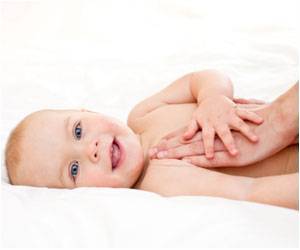Modifiable risk factors that reduce the risk of sudden and unexplained death among infants identified.

‘Study identifies several modifiable risk factors that may contribute to sudden and unexplained deaths in infants during their first days or weeks of life.’





SUID is defined as the sudden, unexpected death of an apparently healthy, full-term infant under 1 year of age, the cause of which is not immediately apparent. It encompasses a range of situations, including sudden infant death syndrome (SIDS), which refers to deaths that remain unexplained after a thorough investigation, and deaths found to result from accidental strangulation or suffocation caused by factors such as unsafe bedding, becoming trapped between a mattress and a wall, or sleeping with a parent or another adult who inadvertently blocks the infant's airway.Using Centers for Disease Control and Prevention records of births and infant deaths from 1995 through 2014, the researchers analyzed deaths occurring in the neonatal (first 27 days of life) and postneonatal (28 days to 1 year) periods. While the rates of postneonatal SUID declined nearly 23 percent from 1995 to 2002, after which they remained stable, SUID rates during the neonatal period remained unchanged. During that 20-year period the percentage of SUID cases attributed to suffocation or strangulation increased in both age groups - from around 2 percent to nearly 23 percent in the neonatal period and from 3.4 percent to almost 25 percent in the postneonatal period.
Almost 30 percent of neonatal deaths occurred during the first 6 days of life. Bass notes that many of these deaths may be the result of sudden unexpected postnatal collapse (SUPC), a sudden collapse - sometimes with full respiratory and cardiac arrest - of an apparently healthy newborn born at more than 35 weeks gestation. SUPC leads to death in around half the cases and serious neurological consequences in half of survivors. There currently is no standard diagnostic code for SUPC, and Bass and his co-authors - including senior author Ronald Kleinman, MD, MGHfC physician-in-chief - have called for standardizing the definition of the condition and establishment of an SUPC registry to better identify such events and facilitate further study.
The investigators note that several recommended practices designed to promote breastfeeding, the importance of which they fully support, may inadvertently contribute to SUPC risks. The practice of skin-to-skin care, in which an infant is placed in a prone position on the mother's chest has been noted in other reports to have a strong association with SUPC. If the mother is also exhausted or sedated, she may even fall asleep with the infant on her chest resulting in co-bedding, an established risk factor for SIDS.
Another recommendation that may have unintended consequences is avoiding the use of pacifiers, which some breastfeeding advocates suggest eliminating and the AAP suggests should not be used until breastfeeding is well established. As pacifier use is strongly associated with a reduced risk of SIDS, the authors feel that recommendation should be reconsidered. Since breastfeeding is also associated with a reduced risk of SIDS, the authors recommend that safe-sleep education be integrated with lactation advice.
Advertisement
Advertisement








